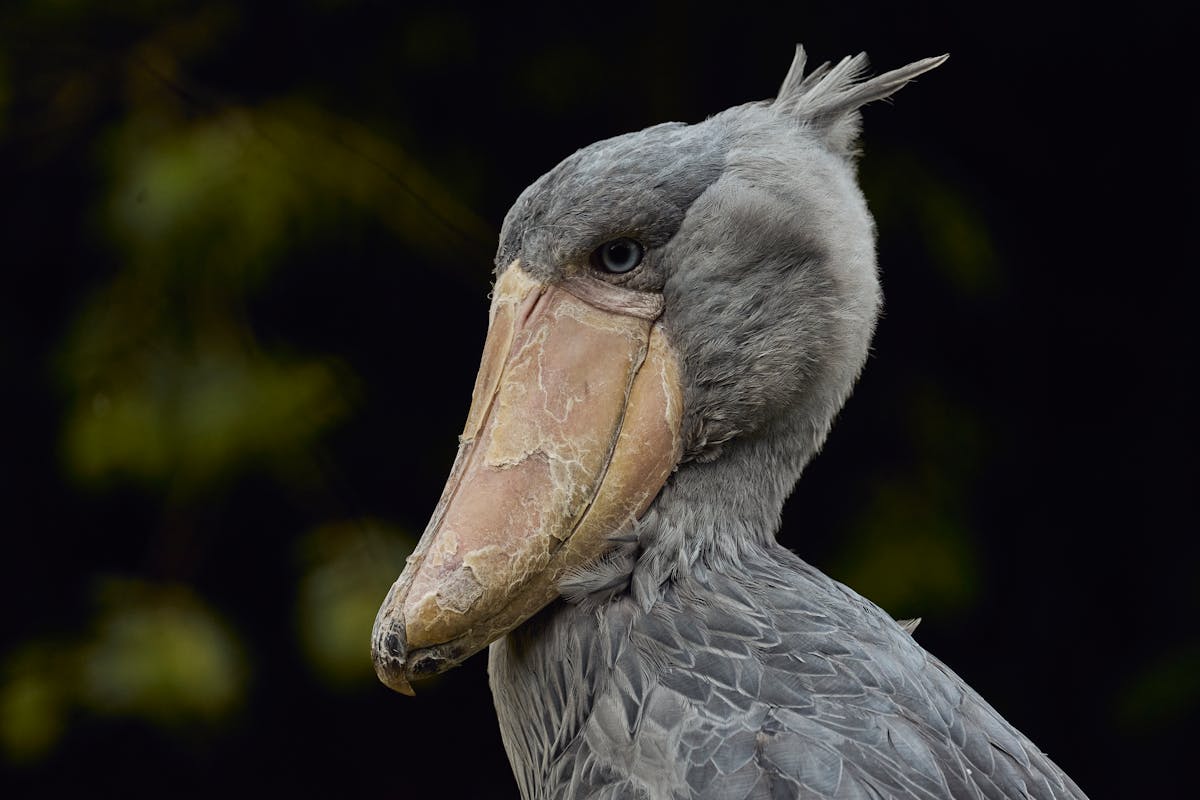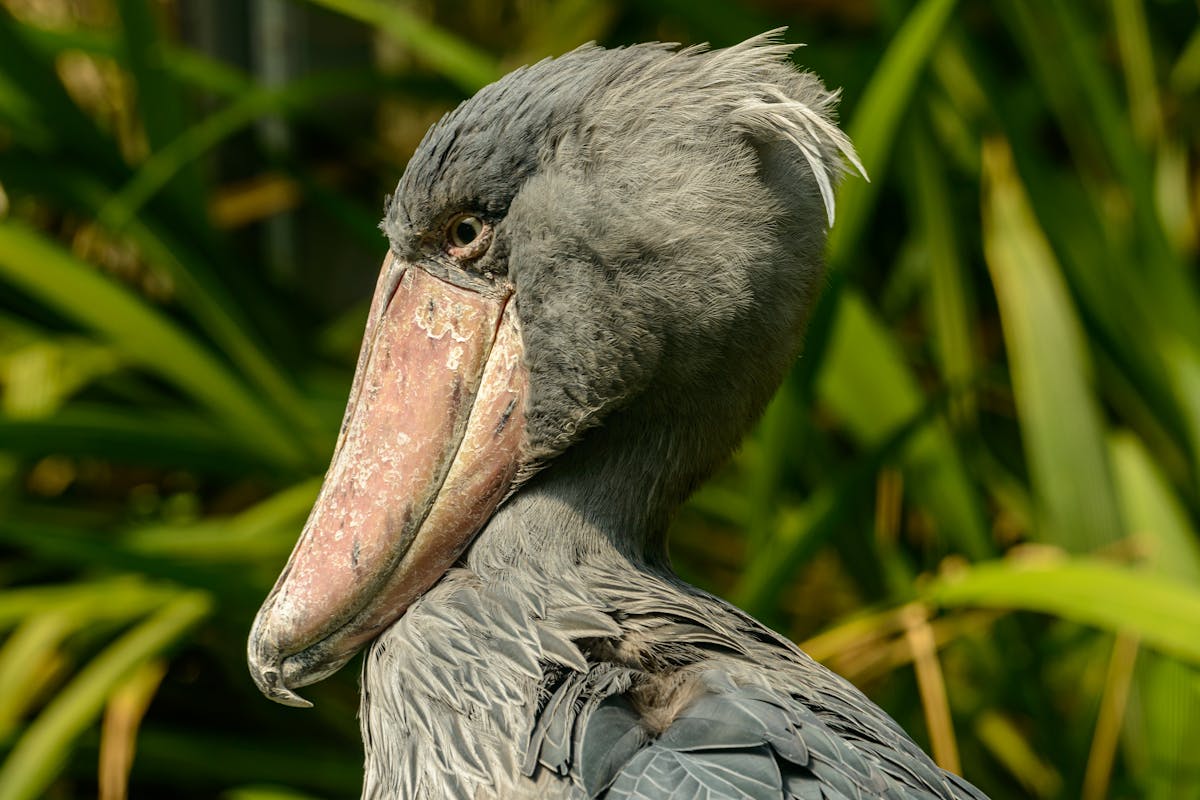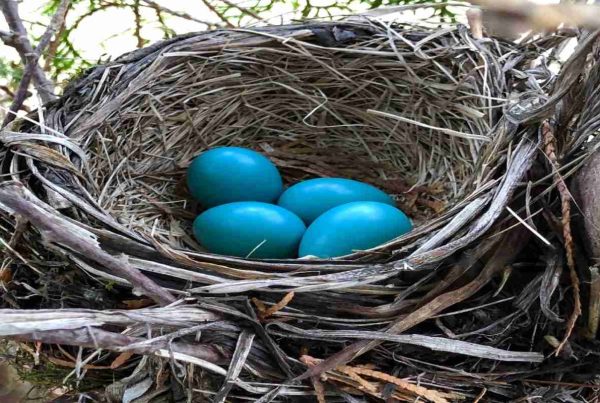
Shoebill Bird Characteristics
Shoebill (Balaeniceps rex)
The shoebill is a large bird with a prehistoric appearance, often called the “King of the Marsh.” It is the only species in its genus. It lives in freshwater wetlands found in East and Central Africa. You can find it primarily in Zambia, South Sudan, and Uganda.
Conservation Status
Shoebills are vulnerable. Researchers estimate their population to be between 3,300 and 5,300. Their numbers are declining due to habitat loss, hunting, and climate change. Illegal trade also threatens them, as many birds die during capture and transport.
Physical Characteristics
- Size: Up to 152 cm tall
- Weight: 4.9 kg (females), 5.6 kg (males)
- Lifespan: Up to 35 years
- Beak: Large, shoe-shaped, with sharp edges for hunting.
People named shoebills for their distinctive bill, which resembles a Dutch wooden shoe. Their long legs and powerful beak help them catch and kill prey with great effectiveness. They can stand motionless for hours, resembling statues.
Habitat & Diet
Shoebills like wetlands with slow water. Here, they hunt lungfish, catfish, frogs, snakes, and young crocodiles. They hunt using a method called “collapse hunting.” In this technique, they lunge at their prey, using their full body weight.
Behavior & Reproduction
- Shoebills are solitary birds, maintaining large territories.
- They build nests in floating vegetation and lay up to three eggs, but usually only one chick survives.
- Both parents care for the eggs and feed the young.
- Chicks fledge at around 95 days and become independent at 125 days.
Unique Traits
- Shoebills communicate through beak-clapping sounds.
- Their hunting success rate is around 60%.
- They can fly despite their large size, relying on powerful wingbeats.
Conservation Efforts
Shoebills face threats from habitat destruction, poaching, and climate change. Conservation groups work to protect their wetland habitats and prevent illegal trade. Supporting wildlife organizations helps ensure the survival of this remarkable species.
The shoebill is a large, heavy bird, greater in size than a mailbox, standing up to eight feet tall. It is endemic to Central and East Africa. Even when in pairs, shoebills prefer their own space and feed at opposite ends of their territory.
The shoebill is unique because of its large, bulbous bill. This bill has many uses. Measuring over 7 inches, it can catch fish. It also makes a clapping sound for hunting and courtship. Males and females have different tones in their “applause.”
The shoebill was once called a stork or a whale-headed bird. Now, it is part of the Balaenicipitidae family. It looks like herons. It has soft, powdery down feathers on its chest and belly. It flies with its neck pulled back, like pelicans. This might be because it fishes in a similar way.
The shoebill is a striking bird with a mix of blue, dark gray, and slate-colored feathers. Its white belly has some decorative feathers on the chest. A small nuchal crest and a ridged bill add to its unique appearance.
It is an exceptional hunter, with a powerful bite to catch prey and even separate vegetation. The upper jaw ends in a sharp hook, helping it grip slippery fish. Shoebills can fly well. They take off straight up with a strong jump and fast wingbeats. Their long legs and large feet allow them to move through wetland vegetation with ease.

Shoebill Bird Identifications
Habitat and Behavior
Shoebills live in East Africa’s wetlands. They prefer marshes with slow water and plenty of fish. In Uganda, Longumbuls to Lakes Marshy Tree hosts them, where they nest in areas with cane. Their fishing technique, called “slipped,” doesn’t work well in deep water. So, they like shallow, oxygen-rich waters where fish come to the surface more often. Shoebills avoid human contact and rely on stealth to catch prey.
Shoebills nest in floating vegetation, using plant materials from their surroundings. They favor deep, dense marsh areas to avoid predators. They mostly stay still during the day. Sometimes, they hunt at night when the moon shines brightly. They remain motionless for long periods, striking prey with lightning speed.
Shoebills regulate body temperature through evaporative cooling on their feet, similar to pelicans. Their strong beak helps them hunt. It lets them dive for fish using their whole body weight. They eat lungfish, catfish, tilapia, snakes, and frogs. Sometimes, they also catch aquatic birds or crocodiles.
Feeding and hunting
Shoebills hold their bills vertically to locate prey through visual observation and sound. When hunting, they shake their heads to clear vegetation before swallowing prey whole. They prefer to hunt alone and can go several days without eating.
Reproduction and Nesting
Shoebills breed in sync with local water levels, usually during the dry season. They build nests on floating plants or distant islands, tucked away in reeds and papyrus. They maintain and reinforce their nests throughout the breeding season.
They lay one to three eggs, with both parents incubating for about 30 days. Eggs turn from blue-white to brown over time. Gray down covers shoebill chicks, and they rely on their parents for food. At first, they receive three meals a day, and this number rises to five or six as they grow. They fledge in 95 days and become independent at 125 days.
Conservation
The IUCN lists shoebills as “Vulnerable.” They estimate the population is between 3,300 and 5,000.
Threats include:
- Habitat loss from agriculture.
- Hunting
- Pollution
- Invasive species
- Climate change
Conservation efforts focus on habitat protection and reducing illegal trade.










